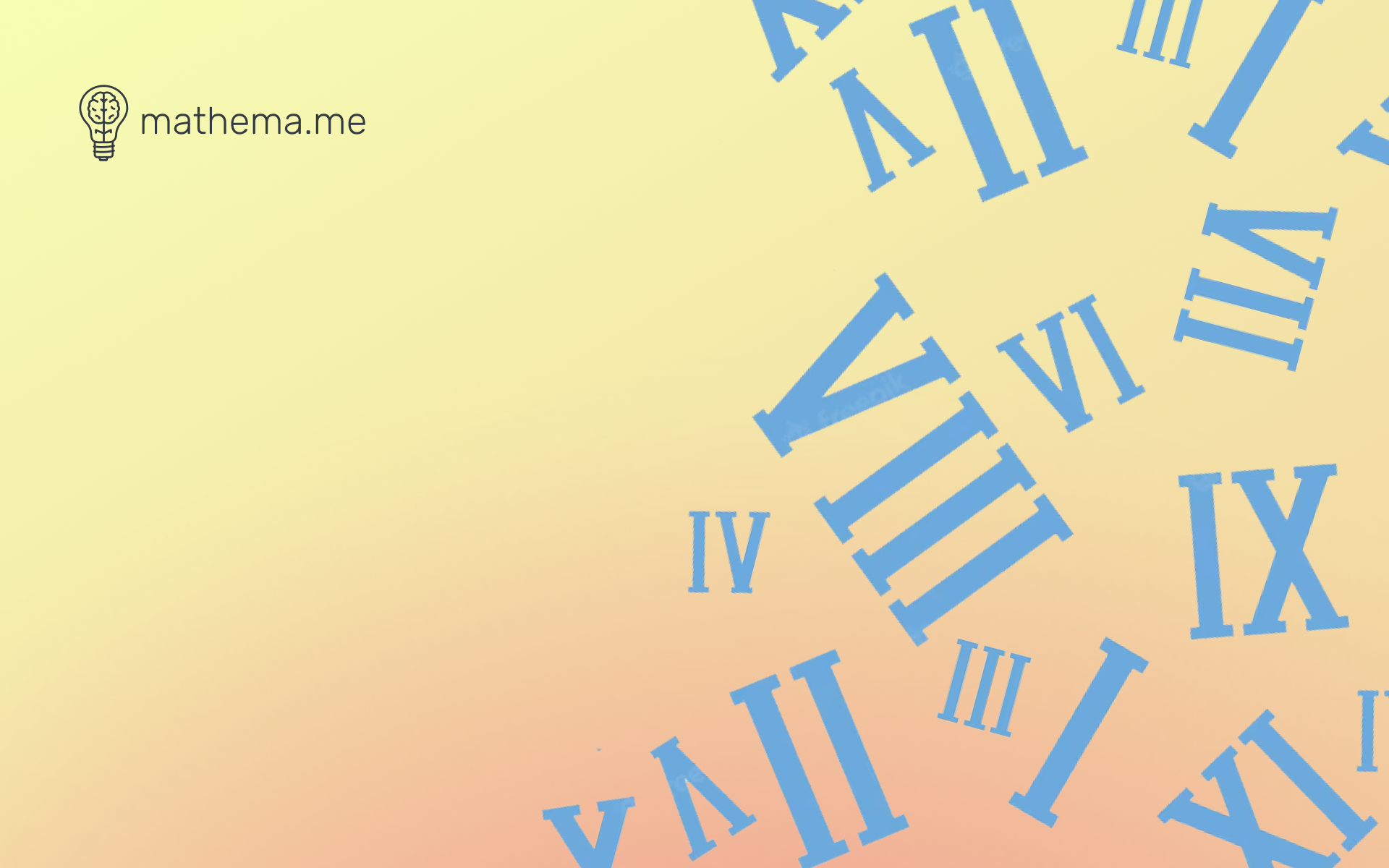Roman numerals, or the Roman numeral system, have their origins in Ancient Rome and have not been in widespread use for many centuries. In today’s world, all mathematics and educational programs rely on the Arabic numeral system, with familiar digits such as 1, 2, and 3. Nevertheless, Roman numerals are still traditionally employed in historical contexts to indicate centuries, in literature to divide sections of a book, or occasionally in clothing to denote sizes.
Mathema provides an explanation on how to distinguish and correctly utilize Roman numerals, as well as how to perform arithmetic with them. The text also features a table comparing Arabic and Roman numerals.
Understanding Roman Numerals
The logic behind the Roman numeral system varies somewhat from the Arabic system. In Roman numerals, there is a distinct letter for each decimal place value and its corresponding half. This means that the following symbols have their own individual characters: 1, 5, 10, 50, 100, 500, 1,000, and so forth. All other numbers are constructed using combinations of these letters. With this set of symbols, you can represent any other numerical value. For instance, 2 is depicted as two ones: “II,” and 6 is expressed as 5 plus 1, written as “VI.”
| 1 | I |
| 5 | V |
| 10 | X |
| 50 | L |
| 100 | C |
| 500 | D |
| 1000 | M |
Writing Roman Numerals
Here are some rules to remember when learning how to write Roman numerals:
- If a smaller number appears after a larger one, it means that you should add them together. For example, VI represents V (5) added to I (1), resulting in VI, which is 6.
- If a smaller number comes before a larger one, it indicates that you should subtract the smaller number from the larger one. For instance, IV stands for V (5) minus I (1), giving you IV, which is 4.
- Numbers with increments of 1, 2, and 3 are written as I, II, and III, respectively. So, the Roman numeral VIII (8) means adding V (5) to III (3). Additionally, you can’t have more than three identical symbols in a row.
- The Roman numeral system primarily relies on adding symbols rather than subtracting. This means you cannot write VIII (8) as IIX (8). Subtraction is only used when reducing a number by 1, as in IX (9), XIV (14), or XIX (19).
- When subtracting, you can only subtract I from V. Therefore, you cannot write 99 as IC; the correct representation for this number is XCIX.
Table of Roman Numerals
Table of Roman Numerals
Here is a chart of Roman numerals alongside their corresponding Arabic numerals.
| Arabic | Roman | Arabic | Roman |
| 1 | I | 30 | XXX |
| 2 | II | 40 | XL |
| 3 | III | 50 | L |
| 4 | IV | 60 | LX |
| 5 | V | 70 | LXX |
| 6 | VI | 80 | LXXX |
| 7 | VII | 90 | XC |
| 8 | VIII | 100 | C |
| 9 | IX | 200 | CC |
| 10 | X | 300 | CCC |
| 11 | XI | 400 | CD |
| 12 | XII | 500 | D |
| 13 | XIII | 600 | DC |
| 14 | XIV | 700 | DCC |
| 15 | XV | 800 | DCCC |
| 16 | XVI | 900 | CM |
| 17 | XVII | 1000 | M |
| 18 | XVIII | 2000 | MM |
| 19 | XIX | 3000 | MMM |
| 20 | XX | 3999 | MMMCMXCIX |
In modern times, the Roman numeral system is seldom employed for representing numbers beyond 4000. There’s also a belief that in Ancient Rome, 5000 was depicted as ‘V’ with a horizontal line above it, but such notations were exceedingly rare.
Why has the use of Roman numerals declined?
Roman numerals are notably more intricate and less practical. Notably, this numeral system lacks a representation for zero, a fundamental mathematical concept crucial, for instance, on the coordinate axis.
Moreover, Roman numerals do not lend themselves to decimal fractions, and expressing large numbers becomes exceedingly cumbersome. For example, 2443 is rendered as ‘MMCDXLIII.’ Consider how cumbersome odometers or counters in vehicles would be using this system. Consequently, mathematicians abandoned Roman numerals in favor of the more user-friendly Arabic numerals.



